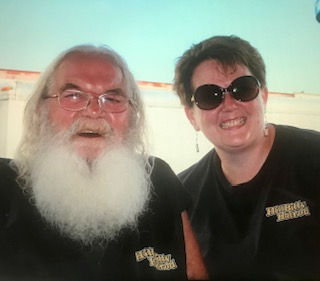College Student Fights Misconceptions about Sickle Cell Disease
- NEIA Red Cross

- Sep 20, 2022
- 3 min read
By Ashley Peterson-DeLuca
In 2020, Nebraska-born Daija Jones went viral on TikTok. It wasn’t for mastering the latest dance trend, but for raising awareness of what it is like to live with sickle cell disease. Thousands of people tuned in to learn more about the disease – and how they can help.

Jones was diagnosed with sickle cell, an inherited disorder that affects blood flow, when she was just a month old. For the first nine years, the disease didn’t really affect her life. She lived just like any other kid. Then, she had to be hospitalized for weeks, causing her to miss school and hope for a normal life. While traumatic, it also sparked her interest in learning more about the disease.
“My mom has always been vocal about me having sickle cell, which led me to want to get involved too,” says Jones. “My doctor told me about volunteering opportunities and ways to raise awareness.”
This September, for Sickle Cell Awareness Month, Jones is joining the Red Cross to talk about how blood donors save lives. Blood transfusions are a critical treatment for those with sickle cell. But more diverse donors are needed. Sickle cell is especially prevalent in people of African descent — and one in three donors who are Black are a match for people with sickle cell disease.
“It can be really hard to have sickle cell – and it isn’t talked about,” says Jones. “My doctor was always my role model. Now, I want to be that role model for kids with sickle cell.”
Inspired by Dr. James Harper at the University of Nebraska Medical Center, she is currently studying microbiology and is on the pre-physician assistant track. After graduating from the University of Kansas, her goal is to go into the field of oncology or hematology.
In addition to her studies, Jones is also the Education and Commitment Leader for the local chapter of Be the Match. She’s educating her fellow students on blood disorders and encouraging more people to join the bone marrow registry. Bone marrow transplants help those with severe sickle cell disease thrive.
But being a college student with sickle cell is a rollercoaster. On good days, she goes to class, studies, plays Animal Crossing or unleashes her creativity by painting.
“On bad days, the pain can reach a level 10 out of 10. I don’t want to do anything but lay down and roll into a ball,” says Jones. “I can’t even put into words the pain that I feel. I’m relying on medicine just to get through the day.”
Sickle cell doesn’t leave any physical marks. Other people can’t see the pain or fatigue, which means some people don’t believe Daija is sick.
“Since a lot of my professors don’t know much about sickle cell, they don’t think that I’m actually in so much pain,” she says. “They don’t understand why last week I was fine and this week I can’t make it to class.”
An important goal for her is to educate others on sickle cell, to make its affects more visible, so they don’t need to fight so hard for accommodations.
She adds: “People who have sickle cell are a lot stronger than you think. We should be able to take a break without being told we are faking it.”
To join Jones and others to raise awareness and save lives, Learn more about giving blood.












Comments